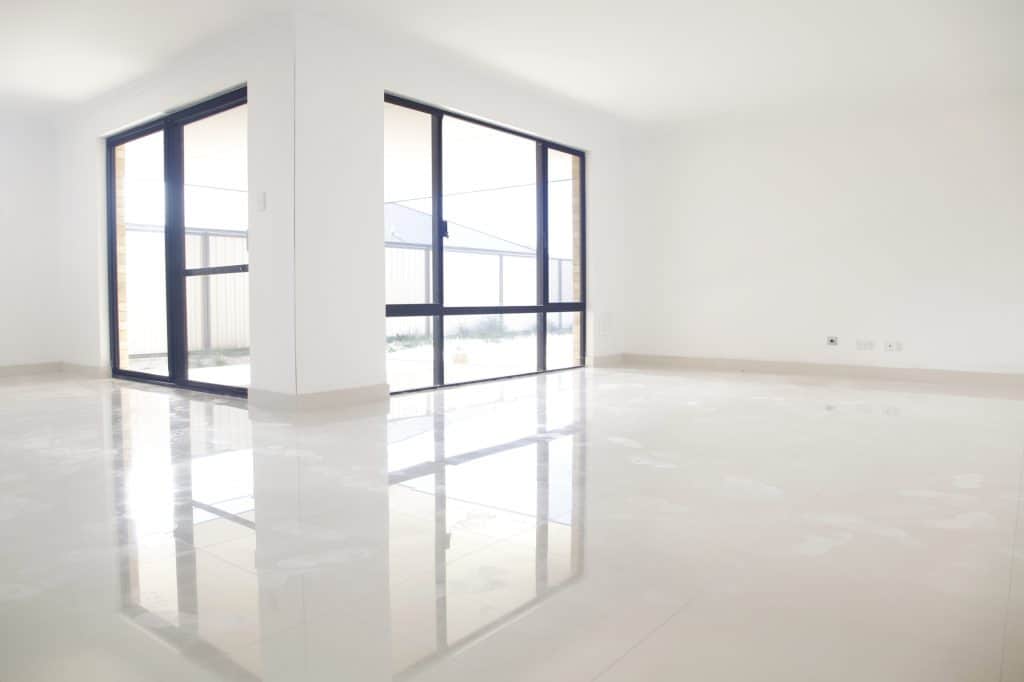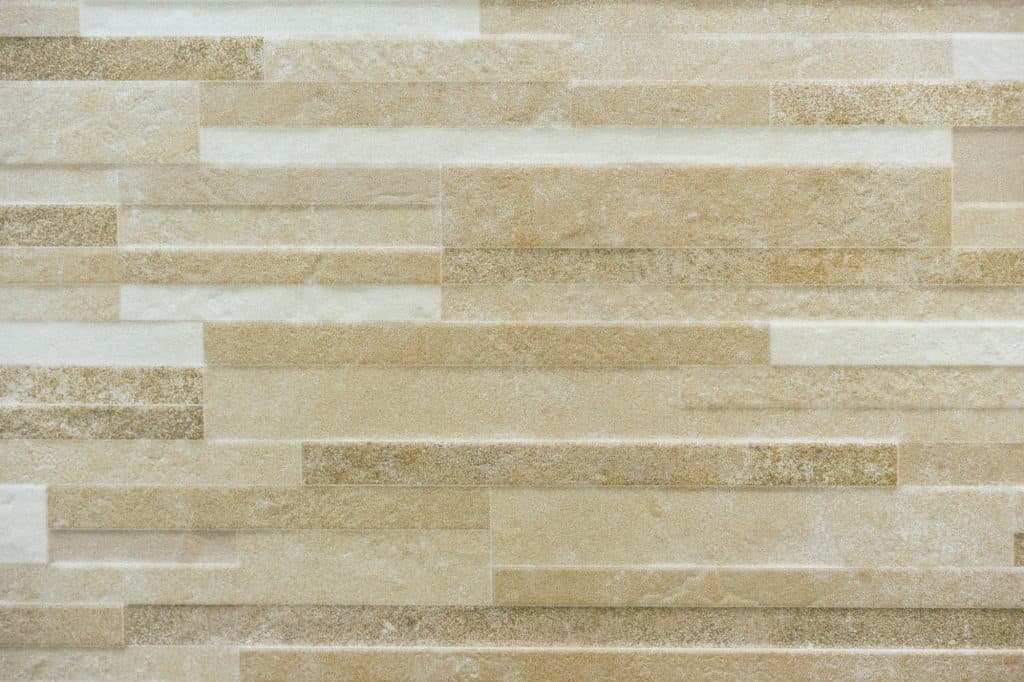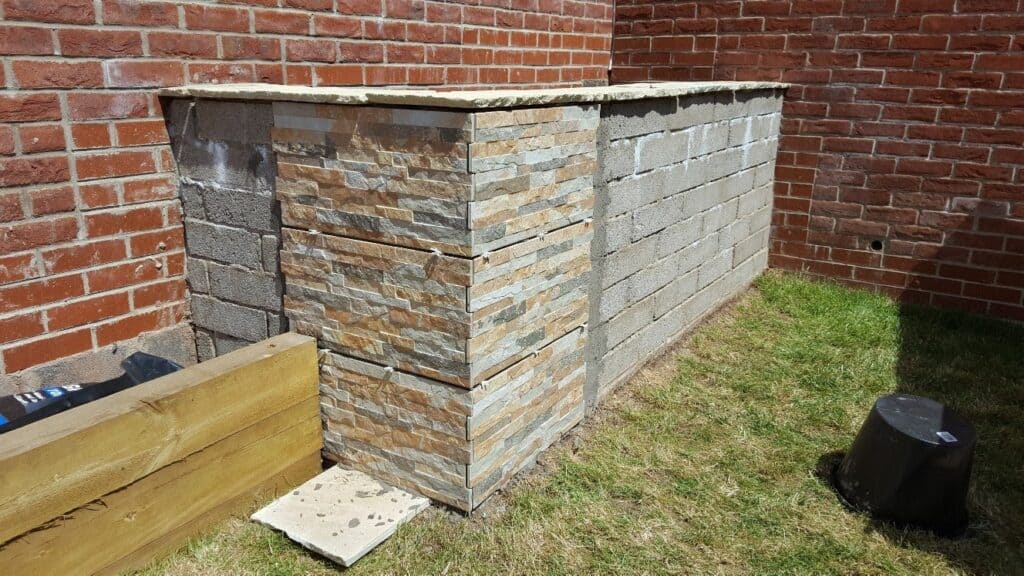Because of its durability and water-resistant properties, porcelain is the preferred tile in many settings. However, if you have invested in new porcelain tiles, you may be surprised to find that your installer recalculates the labor estimate – upwards. These tiles are not suitable for DIYers to lay as a weekend project.
The cost of installing porcelain tile is high because it is a very hard material and difficult to cut. Special cutting tools, including a wet saw with a diamond blade, are required to make cuts. Special attention must be paid to the subfloor as any unevenness will result in cracks.
Porcelain tiles are a chic choice in many settings, but keep in mind that purchasing the tiles is not where the budgeting should end. Let’s go through why they are more expensive to lay and if the outlay is worth it.
Why Are Porcelain Tiles Installation Cost More Expensive To Lay?

If you aren’t a professional tile installer, you are probably wondering how hard it could be to stick a few tiles onto a surface. In the case of porcelain tiles, the answer is exactly that – these tiles are very, very hard!
Porcelain has a long reputation for creating an attractive and waterproof surface. Its first recorded use was for wall tiles in China in the 15th century, so it has a long track record as a durable material perfect for many home applications.
Because porcelain is more water and stain resistant than standard ceramic tile, it is the preferred option in most bathrooms and kitchens. Ceramic tiles may look similar, and it certainly is an excellent choice for most indoor settings. There are, however, a few significant differences that set porcelain tiles apart and contribute to the higher overall cost of the tiles and the installation.
Porcelain is made to last a lifetime. While it might be straightforward to lay them on a level cement floor if the tiles fit precisely, the problem arises when the subfloor isn’t perfectly level, or it isn’t concrete, or worse still, you need to shape the tiles to make them fit.
Various sources online say that ceramic tiles can be as much as 60-70% cheaper to install than porcelain tiles, due to the increased purchase price of the tiles themselves, as well as the increased labor work required when installing them.
Laying porcelain tile costs more because the installer needs specialized tools to cut the brittle material. In addition, they are heavier, and setting them on walls can take longer because they may need to dry before adding more rows. Other things like tile design or pattern, room size, and preparation of the surface that is being tiled will also be factors that affect the cost.
To cut porcelain tile will require at least three different types of tools. They need to be able to cut, shape, and nip off small bits. These functions must be done without chipping the tile, which has a similar texture to glass while it is being installed. So, in addition to a regular tile cutter and nipper, a wet saw with a diamond cutting blade is required to cut tiles to the required size.
What Are The Pros Of Using Porcelain Tile?
If porcelain tiles are so much more expensive, why use them? Well, there are several reasons why porcelain tile is so popular and the tile of choice in many settings:
- Porcelain is strong and durable, and it’s going to last for 60 to 100 years.
- It is water-resistant, so it is perfect for damp areas like bathrooms and laundry rooms. For a tile to be certified and referred to as porcelain, it needs to have less than 0.5% water absorption rate as measured by the Porcelain Tile Certification Agency.
- Porcelain tile is a uniform color all the way through – so you are less likely to notice chips and scratches.
- Porcelain is much denser because it is manufactured from a more refined clay than regular ceramic tile.
- It can be used in spaces where the temperature fluctuates. Porcelain is excellent for areas like countertops as it has very good resistance to heat.
- Porcelain tile is available in designs that mimic natural materials like stone or even wood.
Disadvantages Of Using Porcelain Tile?

But although all of these things may sound perfect, before you head out to go and select your new porcelain tiles, there are also a few negatives that you should be aware of.
- Porcelain tile is more difficult to lay, so you may need to hire a professional to do the installation. One reason for this is that it’s an extremely hard material and difficult to cut and shape tiles without breaking them.
- Porcelain tile is more difficult to manufacture, so it costs more. Therefore, the initial outlay for your new tile surface will be more per square foot.
Although they are often similar in appearance, porcelain tile has different properties to ceramic tile. Porcelain is far denser because it is made from very fine, smooth clay. Tiles are usually glazed, which means they have a film of glass baked onto the surface.
- Porcelain is very brittle, so it will crack if the subfloor has the slightest bump or dip. Special attention must be given to the application surface ahead of the installation of the tiles.
- Depending on the thickness you choose, porcelain may be significantly heavier than ceramic tile.
- Although porcelain offers superior water resistance to standard ceramic tile, and you won’t have to seal them, the grout between the tiles will still need to be maintained.
- The glazed surface on many ceramic tiles makes them incredibly slippery, so they may not always be a good option for walkways.
- Getting them in is one challenge but getting them out is just as tricky. If you need to do alterations or remove a cracked tile, lifting the porcelain tiles in the future may prove difficult.
- The Tile Council Of North America has indicated that porcelain tile is more difficult to bond. Special tile adhesives need to be used that are specific to the porcelain. It is not recommended to use ready-mixed adhesives as they could dry out unevenly because porcelain is moisture resistant. When laying porcelain tile, it is essential to use a high-quality adhesive.
How To Lay Porcelain Tile

If your heart is set on installing porcelain tile, but you don’t have the extra budget to hire a professional, having the right tools is the first step to success. Before you start, check the PEI rating of the tiles you have in mind. This rating is based on testing done by the Porcelain Enamel Institute and measures the durability of the tile’s surface.
Remember that not all porcelain tile is suitable for every application. A tile with a PEI of 2 may be perfect for the wall in your bathroom, but it is not ideal as a floor in a passage. The last thing you want to do is complete an entire project only to find your tiles dropping off the walls or cracking underfoot because they are not suitable for the surface they were laid on.
Pay special attention to the surface that you will be tiling. The surface should be rigid and completely level. This is an essential step because porcelain is not forgiving, and any movement from below will quickly result in cracks. Don’t forget your safety gear, and always use a high-quality adhesive suitable for porcelain.
While most DIYers can get to grips with laying a new surface using ceramic tile, laying porcelain requires more specialized equipment, and a bit of experience also helps. When working with porcelain tile, the most important tool you will need is a wet saw with a diamond blade. If you don’t have one, check if you can hire one from your local hardware store.
Some people argue that you can use an angle grinder instead, and this will work, but just be sure to use a diamond blade on it:
Once you have mastered the knack of shaping the tiles and have the correct adhesive, you can get underway with the tiling. Remember to check the tile level frequently, as any porcelain tile corners that stick up even slightly can become razor-sharp obstacles when the job is complete.
Although it is always tempting to save money by undertaking DIY projects, it is a good idea to carefully assess the task before attempting to go it alone with porcelain. Although porcelain tiles are durable, chic, and water-resistant, they can also be a headache to install successfully, so when possible, factor in the cost of a professional installer.
FAQS
Q: Why do porcelain tiles floor cost more to lay?
A: Porcelain tiles floor can cost more to lay due to several factors. These factors include the cost by type, the size of the tile, the cost to install, and the difference between porcelain and ceramic tiles.
Q: What is the cost difference between porcelain and ceramic tiles?
A: Porcelain tiles are generally more expensive than ceramic tiles. That’s because porcelain tile is made from a more refined and dense clay, which contributes to its durability and ability to withstand heavy foot traffic.
Q: Why do porcelain tiles cost more to install than ceramic tiles?
A: The cost to install a porcelain tile floor can be higher than the cost to install a ceramic tile floor due to the extra labor involved. Porcelain tiles are denser and harder, which requires special tools and techniques to cut and install.
Q: What is the difference between porcelain and ceramic tiles?
A: The main difference between porcelain and ceramic tiles lies in their composition and manufacturing process. Porcelain tiles are made from a finer clay and fired at a higher temperature, making them more water-resistant and durable compared to ceramic tiles.
Q: Are unglazed ceramic tiles less expensive than porcelain tiles?
A: Yes, unglazed ceramic tiles are generally less expensive than porcelain tiles. Unglazed ceramic tiles have a natural, matte appearance and require sealing to make them resistant to staining and moisture. They are commonly used in outdoor and high-traffic areas.
Q: What factors should be considered when selecting between ceramic and porcelain tiles?
A: When selecting between ceramic and porcelain tiles, factors such as the intended use, budget, preferred style, and installation method should be considered. Ceramic tiles are often suitable for areas with low foot traffic, while porcelain tiles are recommended for areas with high foot traffic and exposure to moisture.
